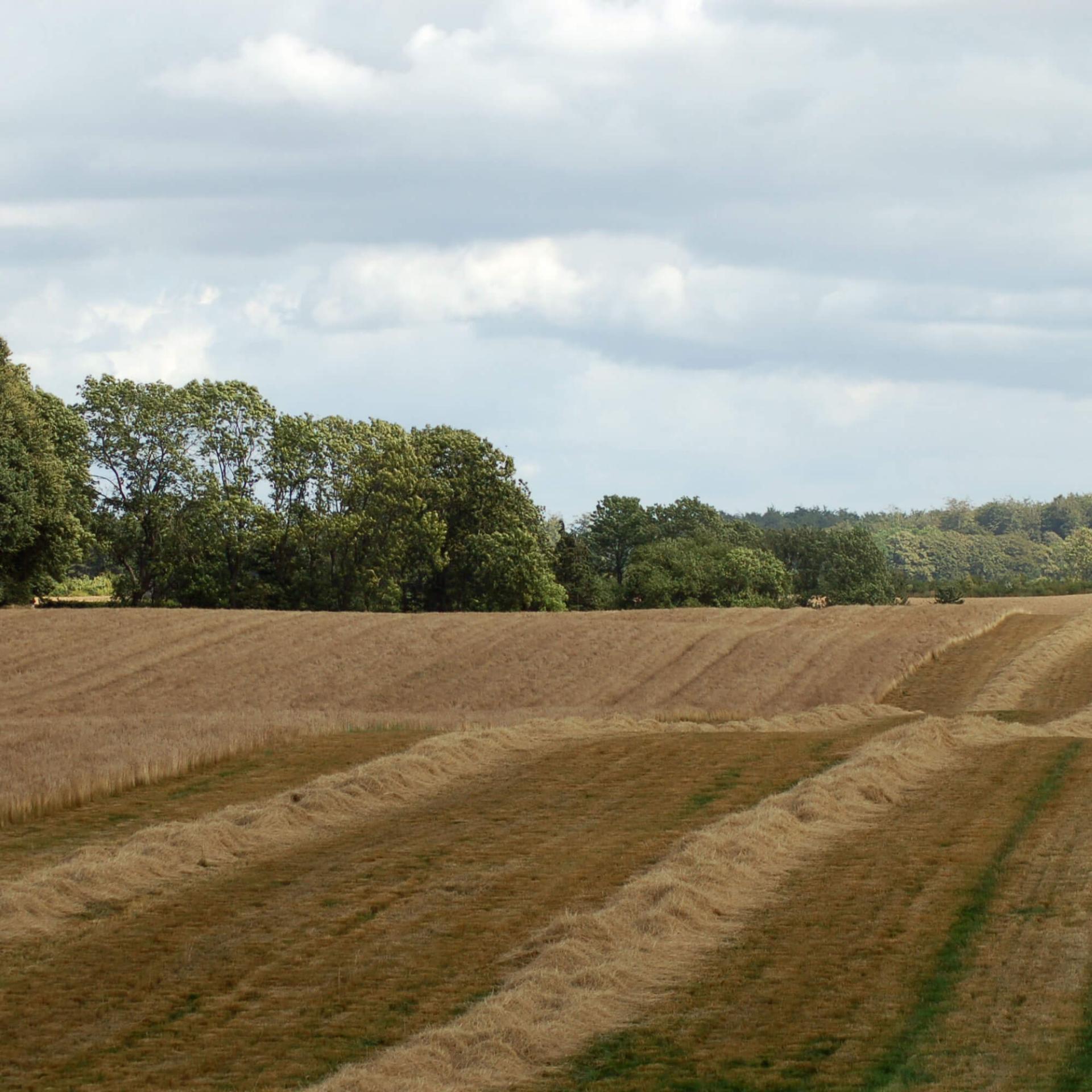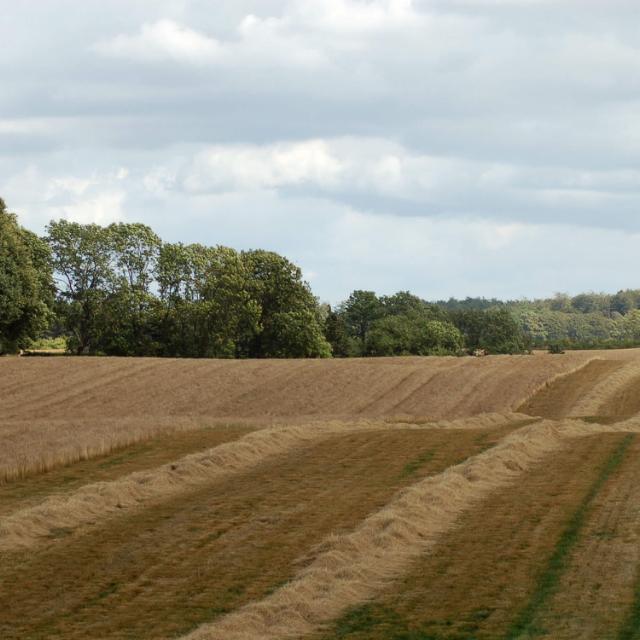Demand is up and harvests are down: Market insights for a time of shortage
A huge global demand and a shortage of grass and clover seeds reduced inventories, while other macro-economic effects also bolstered prices.

Above-average 2021 seed harvest in Denmark, and slightly below in the Netherlands
Compared to previous years, the early species, e.g. fescues and Poas, had a good yield, while perennial ryegrass (Denmark’s leading seed species) was 2% above average yield. In the Netherlands, where perennial ryegrass also takes up the biggest acreage, the harvest was 7% below the five-year average. Grass-seed production in other parts of the world faced big challenges, especially in North America. The summer ‘heat dome’ that covered large parts of the US and Canada scorched so many fields, the harvest was a near-disaster. Even in regions with irrigation, the yield was below average.
New contracting for grass production faces a particular challenge: competition from high-priced alternative crops such as cereals, corn, oilseed rape and soya beans. Farmers have so many good production alternatives, there may well be limits on the future availability and price flexibility of grass and clover markets.

Global consumption remains high – and so do prices
Since our inventories were already low, we started our cleaning facilities at full speed immediately after the 2021 harvest. Our aim was to give customers a sufficient and early supply, especially for previously contracted quantities. As a result many species and varieties are already short or sold out for the coming season. Turf species are especially hard hit; prices for everything from lower-quality commodity varieties to high-end professional turf varieties are at an all-time high. Prices for forage mixtures have stabilised on a high level. The situation has been made worse by production countries that have been less active than usual on the supply side. China in particular seems hungry for seed.
TURF: Limited supply meets strong demand for season 2022
Inventories remain low throughout the supply chain. Suppliers are focusing on loyal customers at their usual quantities to maintain long-term relationships. Mixture, coating and packaging capacities are close to the limit.
Red fescue prices are firming for all three sub-species. Despite the good harvest, supplies are insufficient to meet the high demand. Offers from Canada can rarely be found. On the positive side, this year’s seed is of better quality and is somewhat heavier than seed from the last three years.
Smooth-stalked meadow-grass/Kentucky bluegrass is back up to previous price levels as a result of market consolidation, a poor US harvest, and stock reduction in the EU.
 Perennial ryegrass, the main driver in the turf-mixture market, is already hard to find from any production country. A combination of failed production and a big US demand has had a significant impact on price levels. And in a changing climate, demand for tetraploid 4turf® varieties is increasing.
Perennial ryegrass, the main driver in the turf-mixture market, is already hard to find from any production country. A combination of failed production and a big US demand has had a significant impact on price levels. And in a changing climate, demand for tetraploid 4turf® varieties is increasing.
The same factors are driving demand for tall fescues with their advanced root systems and good drought-tolerance. Even the normally cheaper forage-type varieties are hard to get for a reasonable price.

An increased demand from the professional turf sector, especially for DLF Select varieties with their higher technical quality, is a strong signal that outdoor sports are gearing up again after a long pandemic break.
FORAGE: Back-to-normal consumption brings quality differences to the fore
After two booming years in forage, demand is back to normal. Our product range highlights the value of peak-performing varieties for digestibility, persistence, disease-resistance and yield. DLF´s Fiber Energy varieties are making a visible difference.
While the top varieties of perennial ryegrass are still short and high-priced, the lower ranked types come at a more competitive price but still kept up by the high commodity prices.
Meadow fescue and timothy have been hit again by bad harvests in the EU and Canada. Prices are firm – where seeds are available. It may still be a bit too early for recommended types. The Euroseeds congress will make the situation clearer.
Smooth-stalked meadow-grass brings a chance to try the new DLF varieties CHESTER and JANKA as older varieties slip away. With a limited number of recommended varieties on the lists, prices are holding firm, while China is absorbing all it can get at record prices.
Italian and annual ryegrass are under pressure through reduced demand from the EU and increased production. Nevertheless, recommended varieties are still priced higher than non-listed seeds from South America. There are no cheap offers because it’s so difficult to contract new production and farmers expect higher production prices.
DLF Alfalfa has again failed in yield, which means there will be limited quantities of coated seed next spring. White clover and red clover are slightly more expensive than last year because China has taken much more of the New Zealand crop.
Cocksfoot has switched from oversupply to shortage as a result of lower US yields leading to imports from Europe.
 DLF Festuloliums, Ryegrass PLUS and Tall Fescue PLUS, are gaining market share through robustness, sustainability and drought tolerance in a changing climate. Shortage of timothy and meadow fescue are boosting demand for the varieties MAHULENA and HOSTYN.
DLF Festuloliums, Ryegrass PLUS and Tall Fescue PLUS, are gaining market share through robustness, sustainability and drought tolerance in a changing climate. Shortage of timothy and meadow fescue are boosting demand for the varieties MAHULENA and HOSTYN.
OUTLOOK: Strong global demand firms the market for grass and clover seed
Raised global demand and poor harvests in many regions of the world are firing up the market. At the same time, a range of other factors such as high commodity prices (for agricultural products, crude oil, wood/pallets, and packaging), increased freight rates (fuelled by a shortage of containers and truck drivers), and a rising rate of inflation are adding pressure. And that’s without mentioning the effect of the last 18 months of Covid-19.
Look beyond the headlines
At times like this, detailed market knowledge is vital. For deeper insights, speak to your local DLF sales manager. Or catch us at the Euroseeds 2021 congress in Prague, 18-20 October. We look forward to seeing you there.